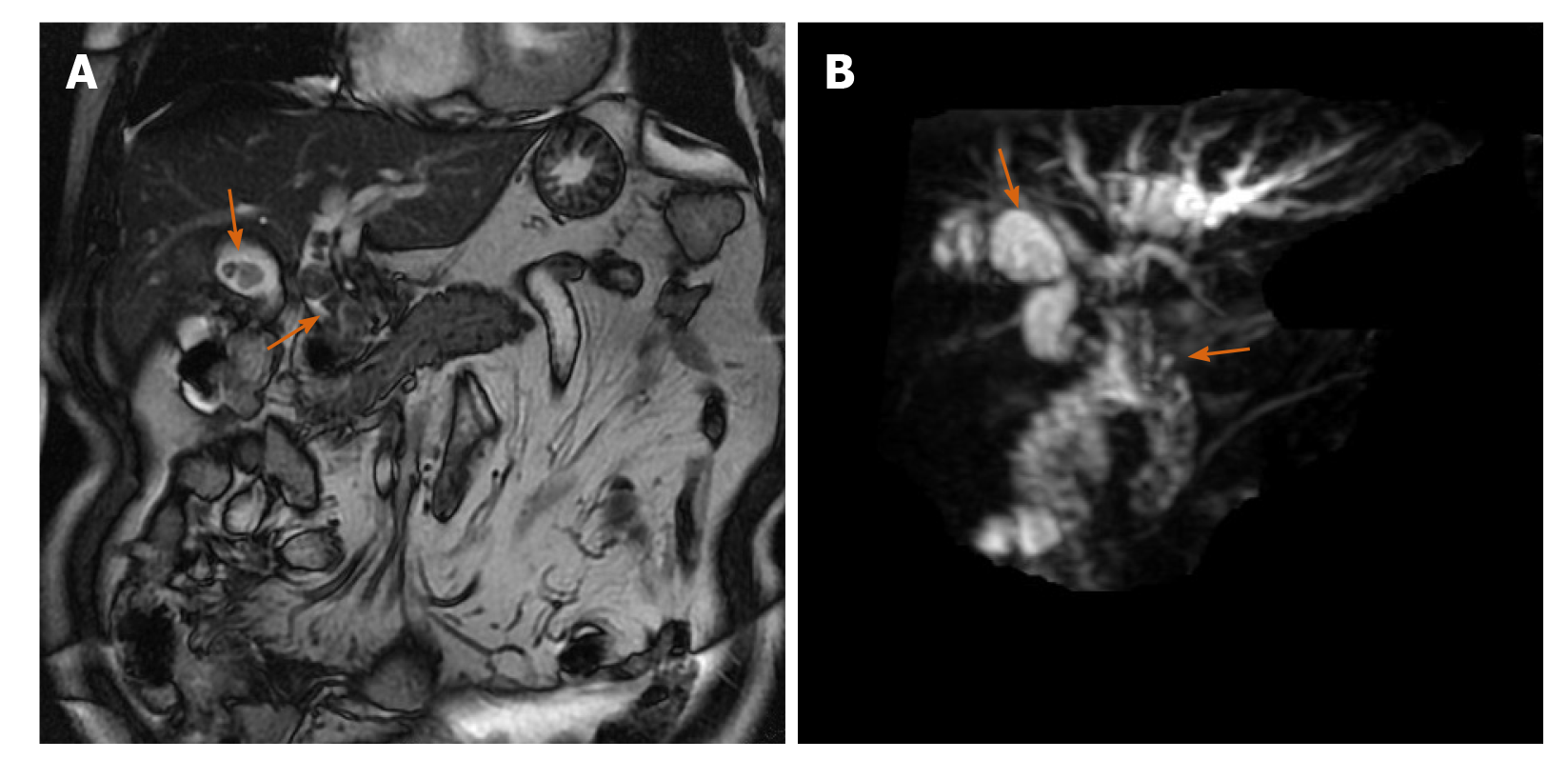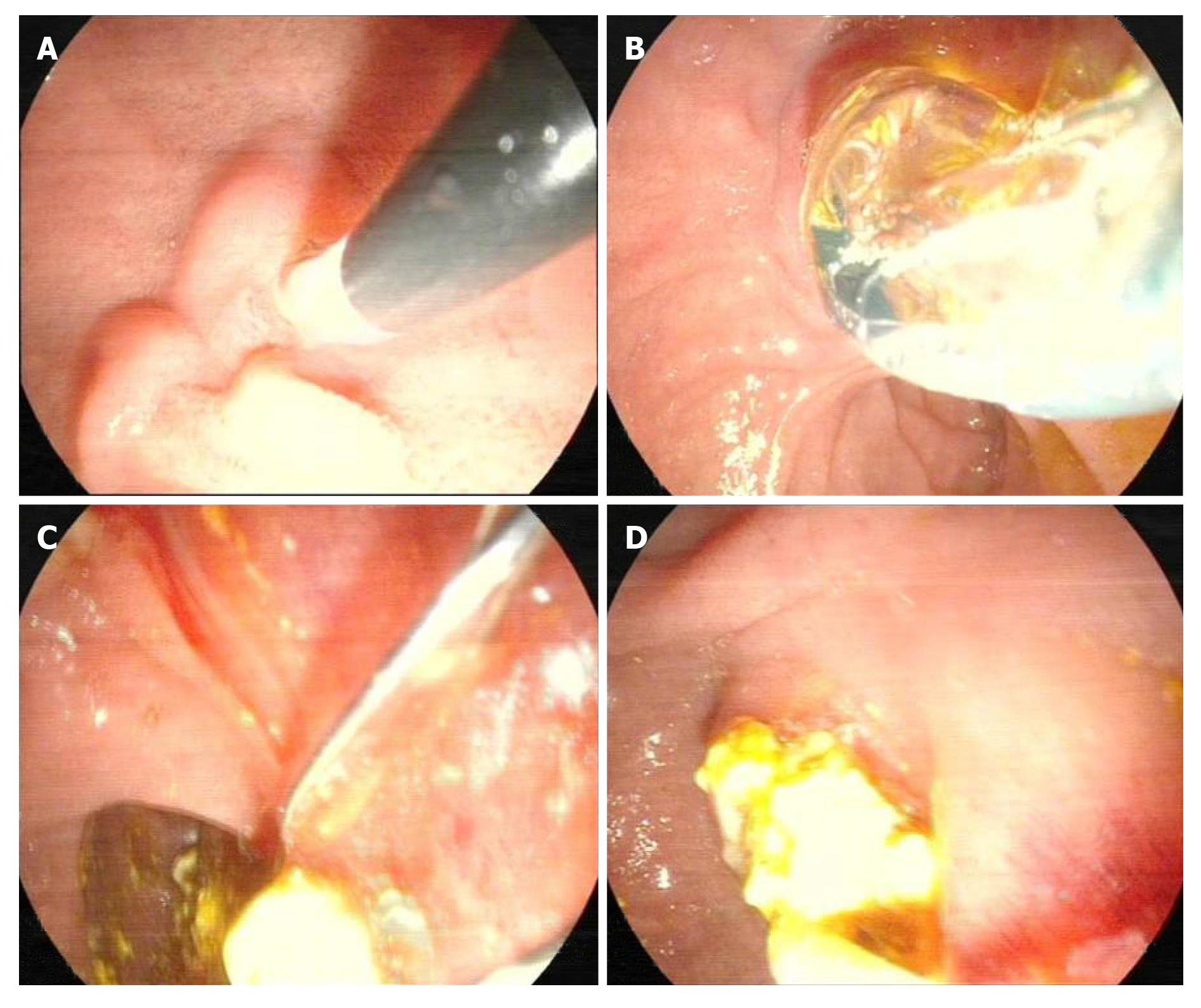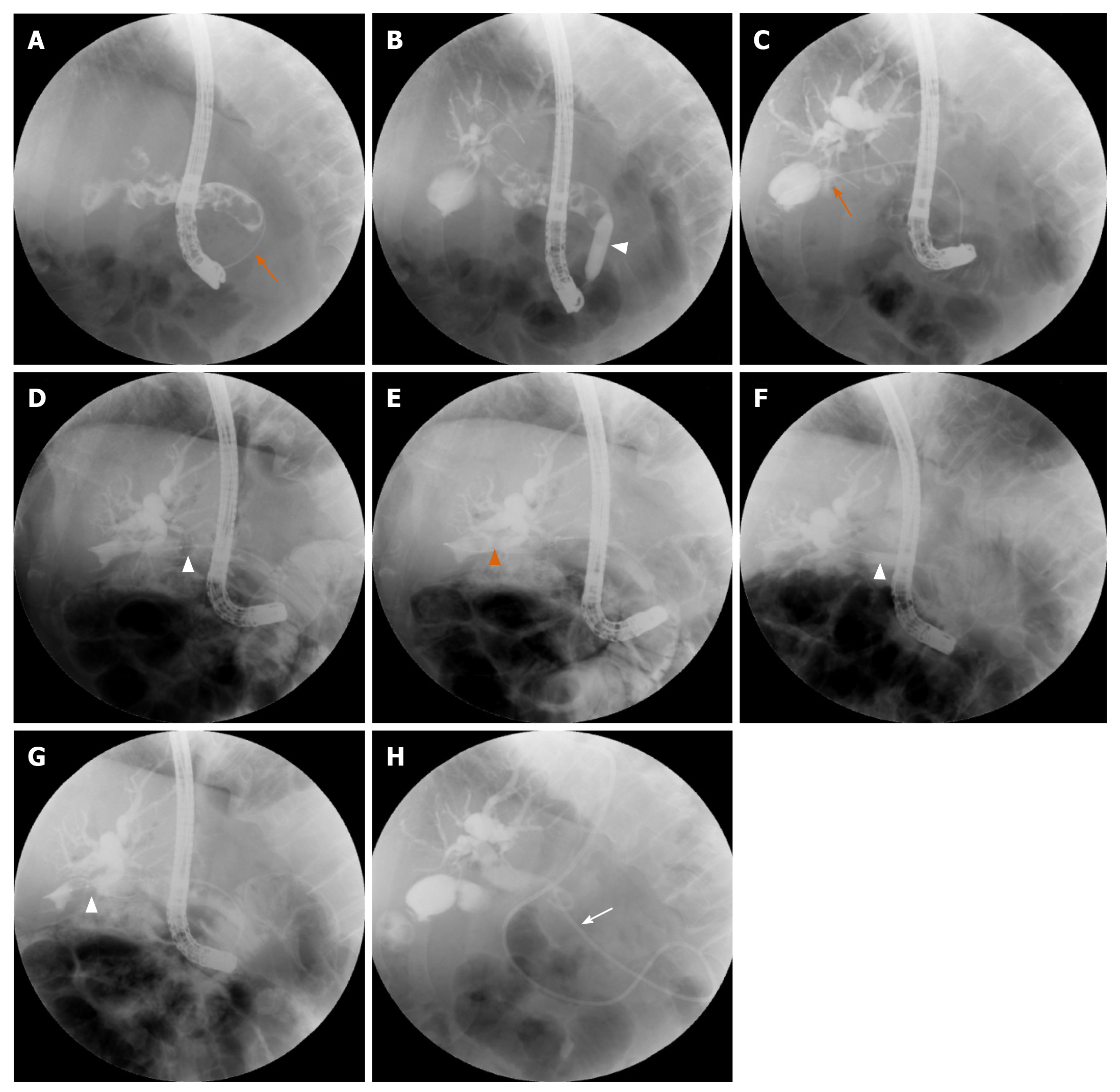Copyright
©The Author(s) 2021.
World J Clin Cases. Jan 26, 2021; 9(3): 736-747
Published online Jan 26, 2021. doi: 10.12998/wjcc.v9.i3.736
Published online Jan 26, 2021. doi: 10.12998/wjcc.v9.i3.736
Figure 1 Preoperative magnetic resonance cholangiopancreatography showed gallbladder and common bile duct stones.
The orange arrowpoints to the stone location. A: T2 weighted image sequence; B: Balanced turbo field echo sequence.
Figure 2 Real-time intraoperative photographs.
A: Duodenal papilla intubation; B: Expansion of the lower part of the common bile duct by the balloon expanding; C and D: Stone removal from bile duct.
Figure 3 Procedure of gallstones and choledocholithiasis removal through endoscopic retrograde cholangiopancreatography.
A: Guide wire insertion into the common bile duct after duodenal papilla intubation (orange arrow); B: Expansion of the lower part of the common bile duct by the balloon (white triangle); C: The guide wire is inserted into the gallbladder, the cystic duct is widened and the stones in the gallbladder and the cystic duct are negative (orange arrow); D: The stone was dragged out with a stone removal balloon (white triangle); E: Stone removal by basket (orange triangle); F: Cystic duct dilation through the balloon (white triangle); G: Gallstone was removed again with the balloon after the gallbladder duct dilatation (white triangle); H: Endoscopic nasobiliary drainage insertion (white arrow).
- Citation: He YG, Gao MF, Li J, Peng XH, Tang YC, Huang XB, Li YM. Cystic duct dilation through endoscopic retrograde cholangiopancreatography for treatment of gallstones and choledocholithiasis: Six case reports and review of literature. World J Clin Cases 2021; 9(3): 736-747
- URL: https://www.wjgnet.com/2307-8960/full/v9/i3/736.htm
- DOI: https://dx.doi.org/10.12998/wjcc.v9.i3.736











